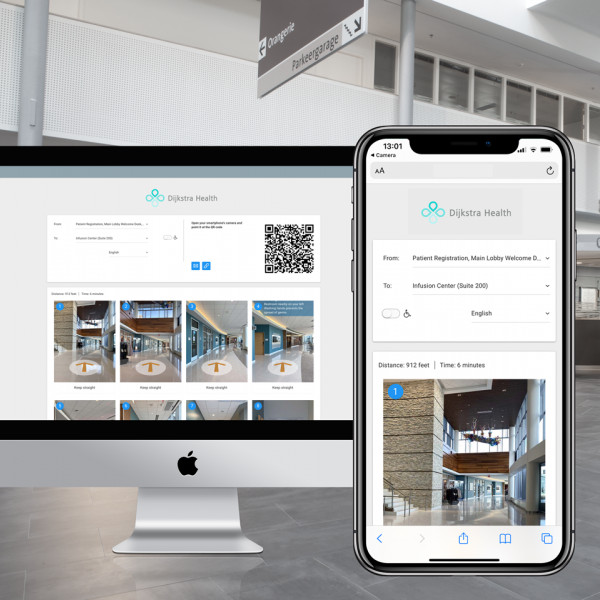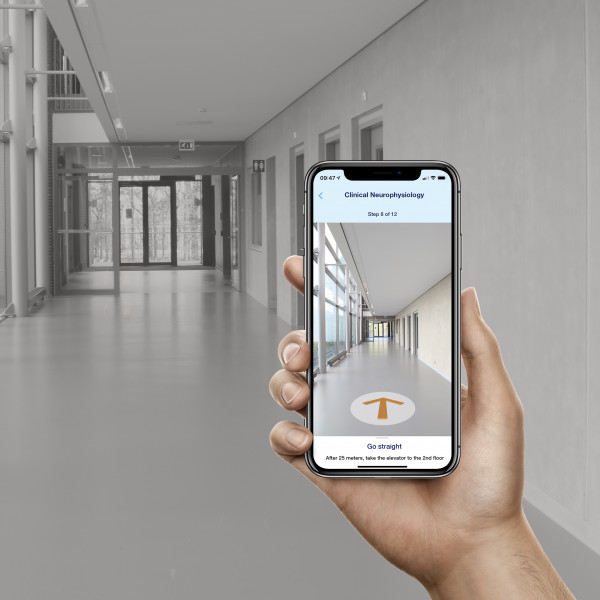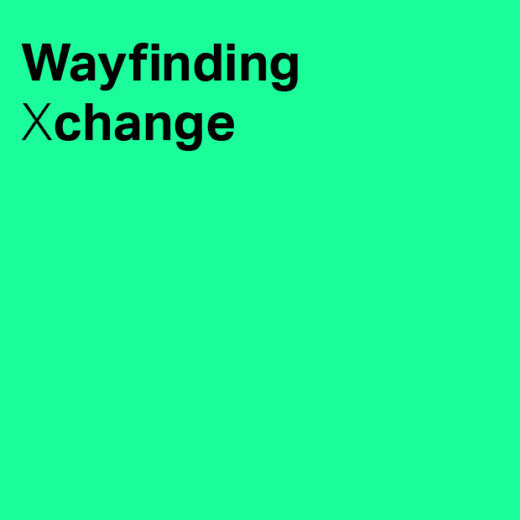What is Eyedog?
The origins of the company go back to the mid-nineties, when CEO Ralph Michels, who came from a background in civil engineering, was studying for a master’s degree in mathematics and computer science. At the time, his father worked in wayfinding and healthcare. Ralph shared his vision of the future with his father: one day there will be devices that tell people how to navigate complicated indoor environments.
Fast-forward to 2012. Ralph had a eureka moment, and the idea for Eyedog was born. By 2014, Ralph understood how to put the technology together to make his vision a reality. His challenge was how to make it work from a user experience (UX) perspective. Over time, Eyedog developed a solution which is now used in around 50 organisations across Europe and the USA – predominantly by healthcare providers focus on improving patient experience.
Eyedog offers wayfinding as a service, including photographing key locations, initial set-up, service onboarding, and ongoing management.
Why are hospitals difficult to navigate?
There are many factors which make hospitals challenging environments to navigate. Older hospitals have usually evolved over time with different architecture and structures. They’ve typically undergone many changes, which makes navigating them less intuitive.
A hospital is also an environment where people are time-conscious and stressed. With so much going on, visitors and patients find it difficult to process or even memorise instructions for navigating corridors that have many turns and bends.
Despite this, hospitals tend not to use maps. Interestingly, neither does Eyedog. Instead, it incorporates photos of objects, and landmarks which are easily recognizable by users. Why use images? Think about the last time someone gave you verbal instructions to get somewhere. They probably referenced landmarks. For example, turn right by the red building. Many people tend to take images in their minds. It’s like a narrative told with pictures. And that’s how Eyedog approaches digital wayfinding.

How does Eyedog work?
At first, Eyedog developed an app which they tested with hospitals. They made a study of user journeys which, in addition to staff, fell into two categories: patients and visitors. But they soon discovered a problem. Some people, who attend hospital appointments or visit patients, don’t want the additional burden of having to download and install an app when they arrive. In other words, apps and maps are not ideal for every hospital user.
So by 2015, the company decided to build an Application Programming Interface (API) to make wayfinding data available at different visitor touchpoints. This can be done in a number of ways, such as through a webpage or hospital app. Essentially, it enables hospitals to bring backend navigational information to the customer-facing front end.
For patients, everything is built around their appointment. So Eyedog gives patients the route to their destination by providing key wayfinding information. For example, let’s say a patient needs to attend a specific department. They go to a reception desk, where they’re given a QR code to scan with their smartphone. This provides a link to their personalised route information.
Mapping a hospital with a footprint of around 100,000 square metres takes around 2 weeks. Typically, that includes between 150 and 200 different locations, from consultation rooms to cafeterias. Once these locations are identified, it’s possible to provide journey information between any two points in the building - that’s around 40,000 potential routes, plus additional routes for people with impaired mobility.

The way forward for digital wayfinding
There are two defined approaches to digital wayfinding in the built environment. On one hand, there are digital tools which work exclusively with static elements. On the other hand, there are digital wayfinding solutions, which lead to purely digital solutions.
We need to remember that not every patient or hospital visitor is tech-savvy. And even those people who are comfortable using digital wayfinding tools still rely on physical landmarks and signage to help them find their endpoint.
For that reason, Eyedog believes in a more holistic approach to wayfinding, especially in hospital environments. Static signage and digital tools need to align and the systems need to work together in order to provide the optimum wayfinding experience for different kinds of users.
Our podcast is available on Spotify, Apple Podcast and YouTube. Don't forget to subscribe and rate us!



